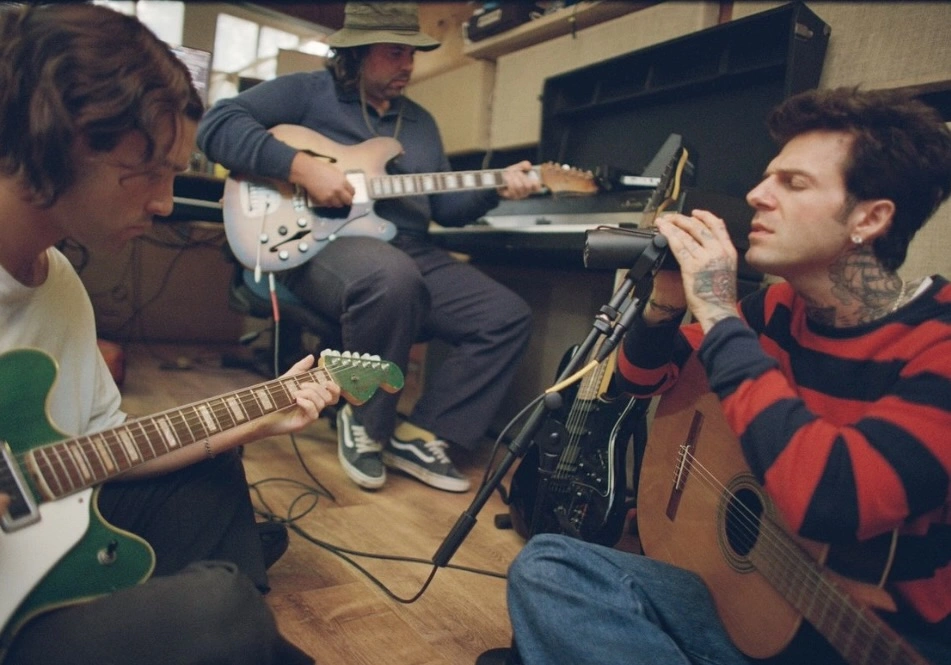Few voices in contemporary pop possess the theatrical vulnerability and unapologetic self-possession of Renee Rapp. Emerging from Broadway acclaim in Mean Girls to television success in The Sex Lives of College Girls, Rapp’s evolution into a full-fledged music artist has never been a side project—it’s been an emotional exorcism. With “Leave Me Alone,” her latest single released in May 2025, she channels the dissonance of hyper-visibility and personal erosion into a crystalline anthem for boundaries, burnout, and internal reclamation.
The Sound of Defiance Dressed in Melancholy
“Leave Me Alone” arrives with sonic restraint but emotional magnitude. Built around a minor-key piano progression and swelling string arrangements, the production is cinematic but controlled. Rapp doesn’t scream; she seethes. Her voice—rich, grainy, and commanding—simmers through verses that feel like whispered ultimatums.
“Every time I smile, they ask for more / But I don’t think I have it in me anymore.”
This lyric encapsulates the song’s central tension: the expectation to perform emotional labor even when the well is dry. Rapp isn’t just tired—she’s overexposed, pushed to the edges of her own identity by fame, love, and invasive empathy.
The chorus delivers its message without metaphors, because none are needed:
“Leave me alone / I don’t owe you softness / Not when I’m this hollow.”
This isn’t mere heartbreak. It’s existential fatigue. And yet, the instrumentation refuses to wallow. Violins swell beneath the chorus, giving the track the architecture of a ballad—but one built on the ruins of emotional overextension.
Fame as Interpersonal Invasion
Where Rapp’s earlier tracks (“In the Kitchen,” “Tummy Hurts”) explored romantic rupture and personal doubt, “Leave Me Alone” turns inward with a scalpel. It doesn’t just depict isolation—it demands it.
In a culture where access is mistaken for intimacy, Rapp interrogates the porous boundaries between public persona and private self. Whether she’s addressing an ex-lover, the press, or a fanbase eager for vulnerability, the result is the same: her body and psyche have become common property, and this song is an act of repossession.
There’s a lineage here that echoes through the catalogues of artists like Fiona Apple, Lorde, and even Britney Spears during her Blackout era—all of whom have, in their own ways, tried to wrestle their truths back from an industry that monetizes personal pain.
Aesthetics of Stillness
The music video accompanying “Leave Me Alone” underscores this ethos. Directed with deliberate minimalism, the visual features Rapp alone in a dim room, occasionally lit by flickering projections—images of herself, fans, paparazzi flashes. Her only interactions are with shadows.
The choreography, if one can call it that, consists of micro-movements: a clenched jaw, a turned back, an avoided eye. This is not a performance—it’s a refusal.
And in an industry that thrives on perpetual motion, public confessions, and algorithmic intimacy, stillness becomes its own form of protest.
The Cultural Pulse: Why “Leave Me Alone” Matters Now
Rapp’s song lands at a moment when solitude is paradoxically scarce and stigmatized. Gen Z and younger Millennials are hyperconnected—digitally saturated and emotionally fragmented. They are trained to share, monetize, and curate their every experience. In that context, a song that asserts the right to disengage feels borderline radical.
“Leave Me Alone” becomes not just a breakup anthem, but a generational thesis: that wellness may begin where visibility ends. That withdrawal isn’t weakness—it’s survival.
In interviews leading up to the release, Rapp has spoken candidly about mental health, trauma, and the pressure to always be “on.” Her honesty has never been a brand—it’s a condition. But here, she complicates that transparency. The song doesn’t invite you in; it tells you to stay out. And that boundary feels, ironically, like the most honest thing of all.
A New Archetype of the Pop Star
In an era when pop stars are often expected to play therapist, messiah, or best friend, Rapp is carving a new silhouette: the artist as defender of her own silence.
Rather than offering parasocial comfort or stylized dysfunction, she gives us discomfort. She doesn’t cry on cue. She closes the door. And in doing so, she challenges listeners to honor the space she needs, not the version they want.
That doesn’t mean the music is inaccessible. Quite the opposite. “Leave Me Alone” is gorgeously constructed, emotionally rich, and vocally masterful. But its beauty isn’t designed to soothe. It’s meant to assert.
Conclusion: Solitude as Strength
With “Leave Me Alone,” Renee Rapp delivers more than a song. She delivers a boundary. In its lyrics, we hear exhaustion—but also clarity. In its melody, we hear retreat—but also self-respect. This isn’t a breakdown. It’s a breakthrough.
Rapp is no longer asking to be understood. She’s demanding to be left alone. And in the process, she gives us something rare: a portrait of solitude that is neither bitter nor broken, but sovereign.
No comments yet.








